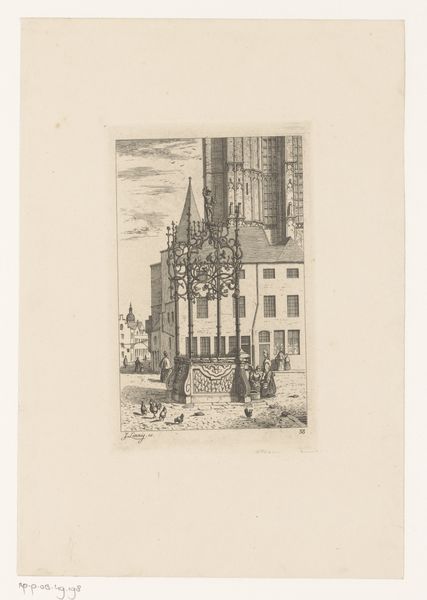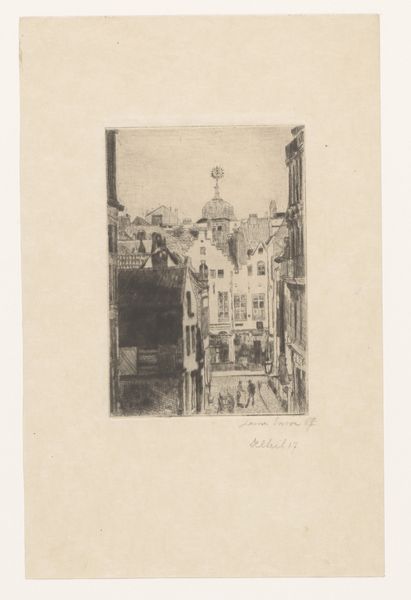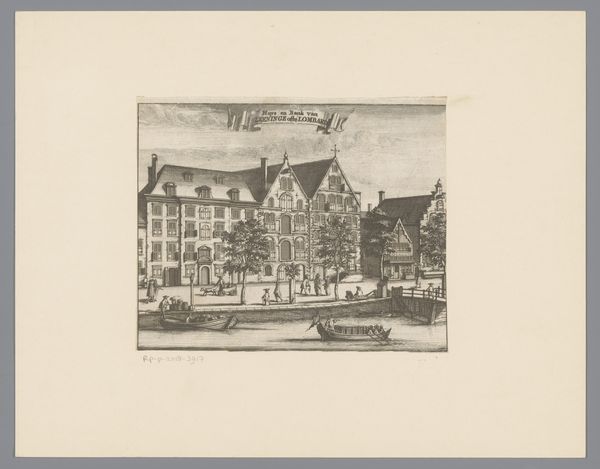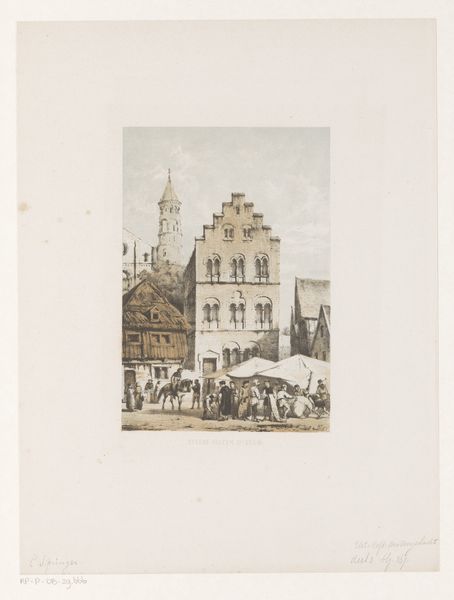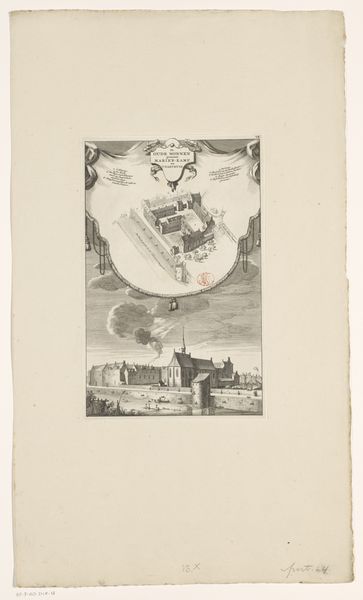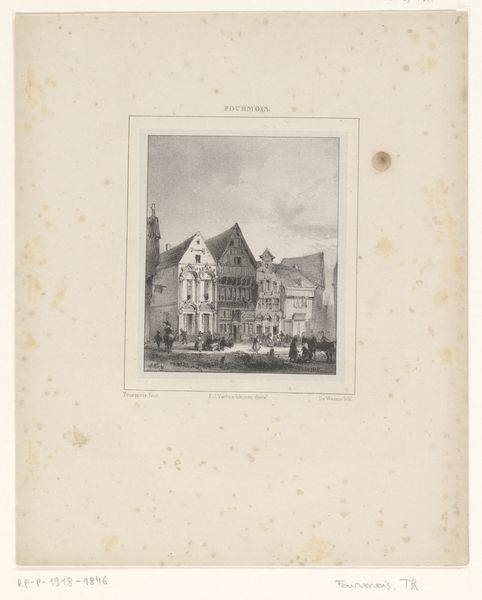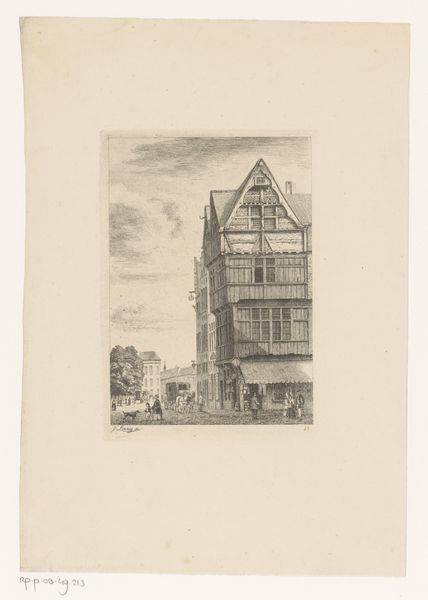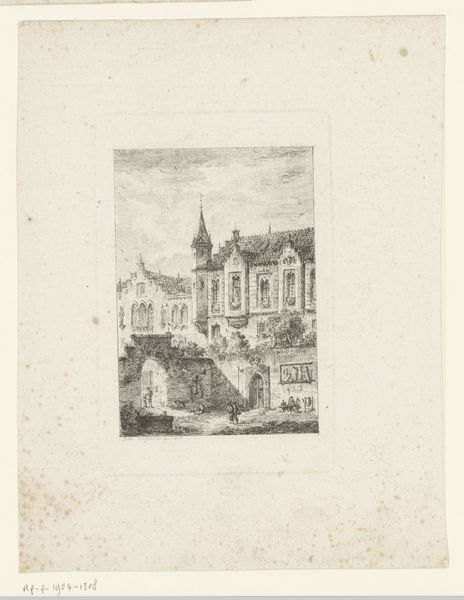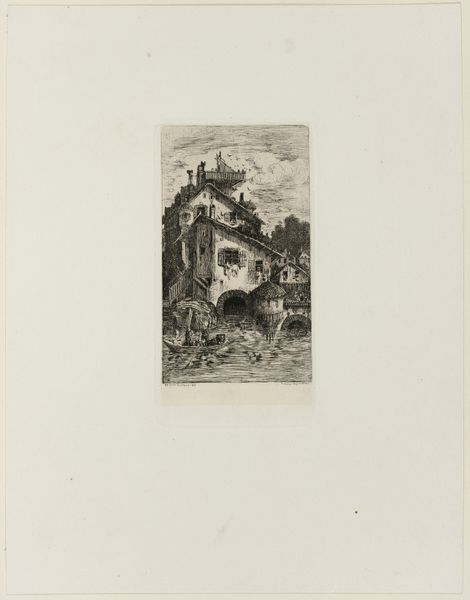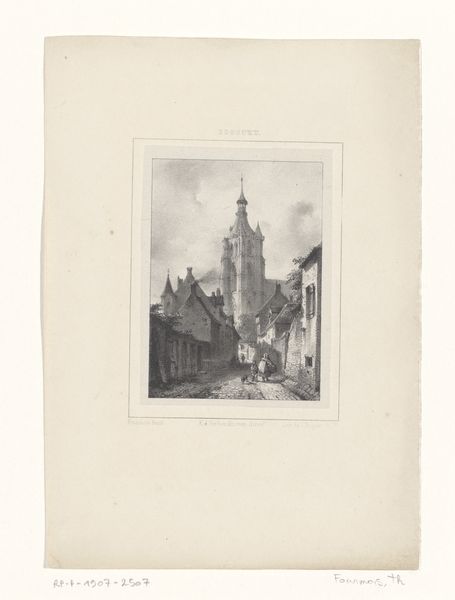
drawing, print, etching, engraving
#
drawing
# print
#
etching
#
landscape
#
cityscape
#
history-painting
#
engraving
#
realism
Dimensions: height 164 mm, width 116 mm
Copyright: Rijks Museum: Open Domain
Editor: This is Jean Theodore Joseph Linnig's "Pompzuil op de Veemarkt in Antwerpen," created in 1868. It’s an etching, and it has this incredibly detailed depiction of a city square. The etching is quite small, but there's so much texture in the buildings and the monument itself. What stands out to you when you look at this work? Curator: Observe how Linnig structures the composition around the central column. Note the calculated contrast: the intricacy of the column juxtaposed against the linear perspective drawing the eye into the deeper recesses of the square. How does the geometry within the space—the orthogonality established by the buildings—interplay with the monument's verticality? Editor: I see what you mean. It almost feels like the column anchors the entire scene. But the architecture seems to compress the space? Curator: Precisely. Consider also the interplay of light and shadow—the etching technique affording him a capacity to modulate tone with strategic hatching and cross-hatching. Where is the light source, and how does Linnig deploy light to define form and depth? It isn’t simply representational but functional in building depth of space. Editor: So, the structure is what gives it its dynamism, even beyond the literal depiction? Curator: Yes, the artist constructs the pictorial space, a carefully orchestrated arrangement of forms and values that generates both the illusion and, simultaneously, the reality of the image. Notice the relationships between forms; Linnig is not simply recording. Editor: That's fascinating. I came in thinking it was a realistic cityscape, but now I see the intentional relationships and compositional choices that elevate it beyond just a record of a place. Curator: Indeed, its excellence is to be discovered in the subtle articulations within its formal structure. I am very happy with your reading!
Comments
No comments
Be the first to comment and join the conversation on the ultimate creative platform.
